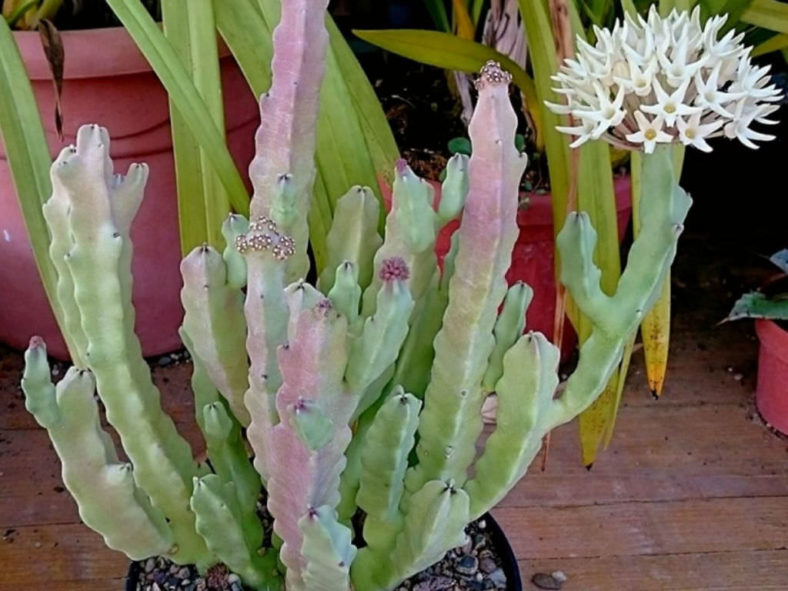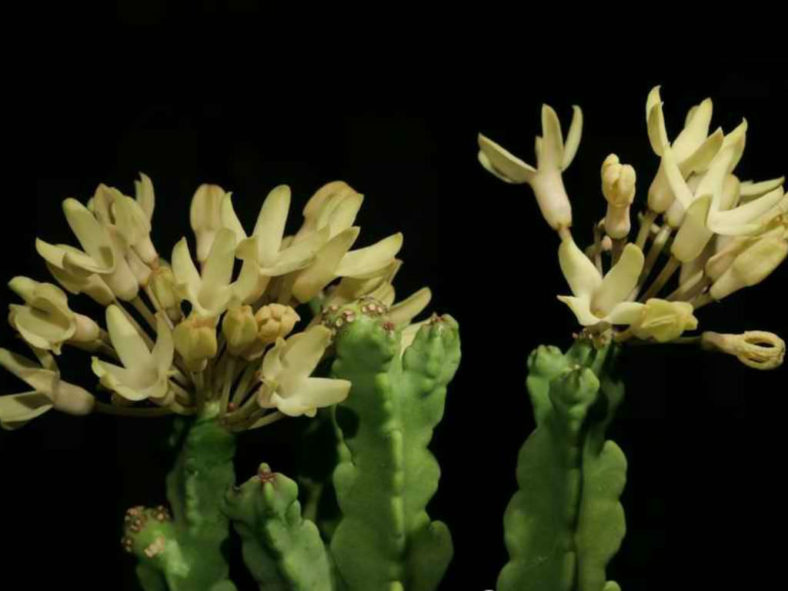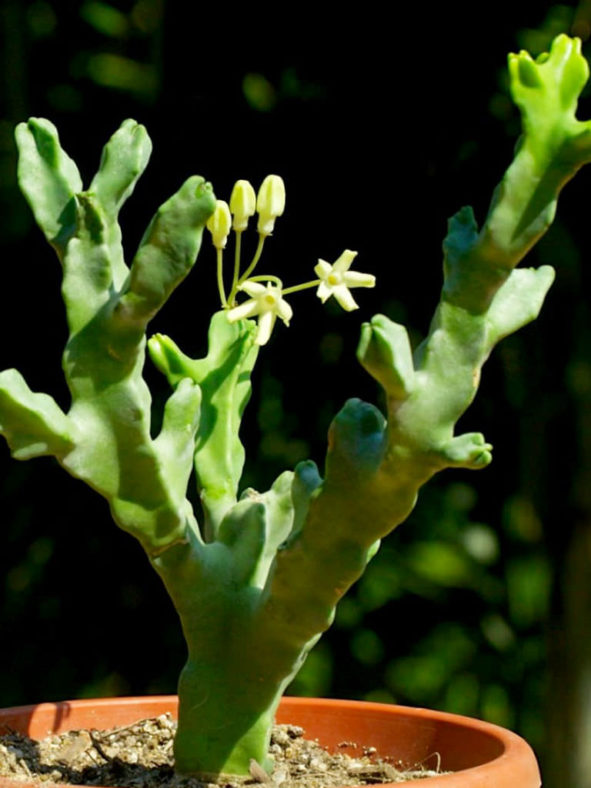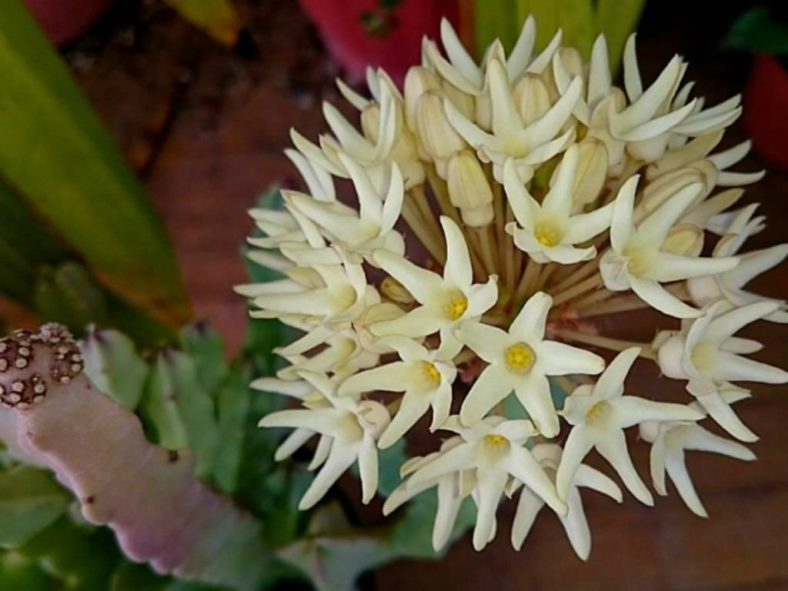Scientific Name
Desmidorchis tardellii Mosti & Raffaelli
Synonym(s)
Ceropegia flava, Crenulluma tardellii
Scientific Classification
Family: Apocynaceae
Subfamily: Asclepiadoideae
Tribe: Ceropegieae
Subtribe: Stapeliinae
Genus: Desmidorchis
Origin
Desmidorchis tardellii is native to Oman.
Description
Desmidorchis tardellii is a small succulent that forms clumps of erect, light green or grayish stems, attractively mottled with red or brown.
The flowers are star-shaped, creamy-white and appear in large, many-flowered clusters in fall.

Hardiness
USDA hardiness zone 11a to 11b: from 40 °F (+4.4 °C) to 50 °F (+10 °C).
How to Grow and Care
Stapeliads are relatively easy to grow. However, they should be treated as outdoor plants as they will easily rot indoors and cannot flower without exposure to outdoor temperature fluctuations. They should be grown under cover so that watering can be controlled. They require a reasonable amount of sunlight to promote flowering and maintain a well-shaped plant. Very shady positions will produce very poor flowering. Stapeliads come from climates that survive extremely high temperatures in the summer months, so most growth is in spring and autumn, with flowering in autumn when the weather cools down. Water in moderation when needed in the growing season, ensuring the soil is pretty dried out between waterings. Do not water between November 1 and March 1.
They all need extra good drainage. Stapeliads are shallow-rooted, and a collection of them can be planted up nicely in a wide, shallow bowl. When planting, it is a good idea to allow the roots to be buried in soil and then put pure gravel or sand around the base to prevent rot.
The easiest and best way to propagate Stapeliads is by using stem cuttings, which can be taken virtually throughout the year. Seed is also a method of propagation.
See more at How to Grow and Care for Stapeliads.
Links
- Back to genus Desmidorchis
- Succupedia: Browse succulents by Scientific Name, Common Name, Genus, Family, USDA Hardiness Zone, Origin, or cacti by Genus
Photo Gallery
Click on a photo to see a larger version.


